

Andrew Maclean
Honda CR-V RS e:HEV vs Toyota RAV4 Edge Hybrid: Spec battle
15 Days Ago
If there’s a ‘just right’ in Toyota’s bourgeoning RAV4 line-up, the latest front-driven Cruiser Hybrid makes a strong claim to occupy it.
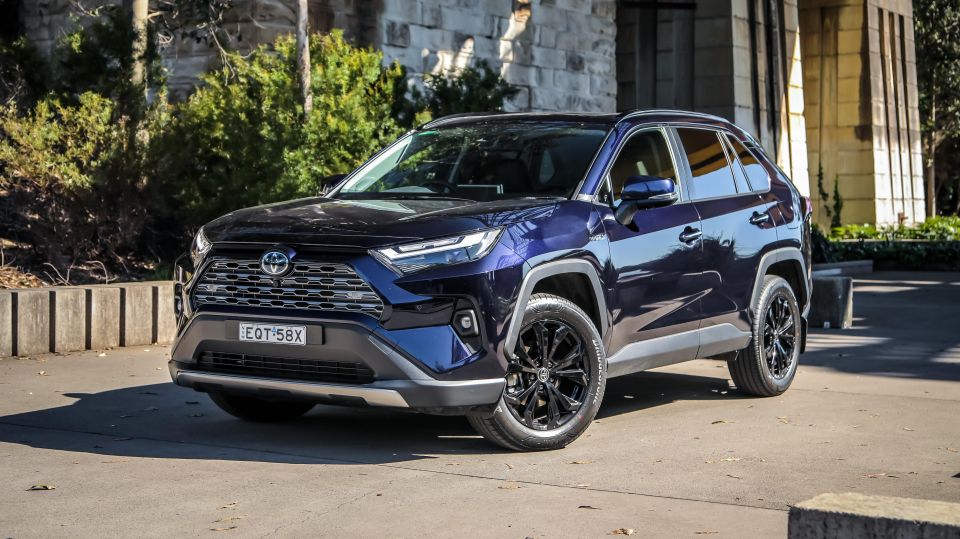


Quickly see how this car stacks up against its competition. Select any benchmark to see more details.
Where expert car reviews meet expert car buying – CarExpert gives you trusted advice, personalised service and real savings on your next new car.
Red hot property – that’s the current status of Toyota’s RAV4.
Ponder this for a moment: the 12-month wait on delivery (at last count) has been widely reported and yet it’s still the top-selling passenger car in Australia bar none.
Sure, buyer bums are constantly hitting SUV seats through existing deliveries but it doesn’t stop that fact that had Toyota a year’s worth of (extra) stock, it’d clear immediately.
Some better news is that the MY22 range has arrived on the Toyota order forms, with updates that now include a choice of hybrid powertrains across all trim levels. The tally is now nine hybrid variants in the fulsome 13-strong medium-SUV stable – it appears a good fit for Australia’s thirst for Toyota’s turnkey, hassle-free petrol-electric car.

Carving an enticing niche is this 2022 Toyota RAV4 Cruiser 2WD Hybrid, four grades up from base and offering plenty of fruit (beyond being a hybrid), as well as a little more budget-savvy than its all-wheel-driven twin. Maybe this is ‘just right’ as RAV4 packages go.
It incorporates some of the updates due for 2022 such as revised headlights and fog light styling tweaks, a refreshed wheel design and a tickled features list.
Not included yet, though, is the next-generation multimedia system – with Toyota Connected Services and USB-C upgrades – and an augmented safety feature that has been detailed but is not due until later this year.
Is it worth a short list for consideration despite the wait for delivery? Let’s find out.
The front-driven hybrid Cruiser clocks in at $45,750 before on-road costs. That’s $2500 up on the petrol-only version and $3000 more affordable than the AWD hybrid. Cruiser pricing is up by $750 over those from last year. Premium paint adds $675.
The Cruiser is currently the priciest RAV4 2WD Hybrid as the Edge grade sat above it is AWD only, and priced from $52,700. Steeping down to the mid-grade XSE with the same drivetrain as our test car saves $2500 ($43,250).
Competitors? If you want a ‘closed circuit’ hybrid (rather than the more elaborate plug-in variant that could mean your daily commute is purely electric) there’s just a couple of choices: the Haval H6 Hybrid ($44,990) and the Subaru Forester Hybrid S ($47,190).
Plug-in hybrid choices (PHEV) – if you’re so inclined – include the MG HS Plus EV Essence ($48,990 D/A) and Mitsubishi’s Outlander PHEV ES ($47,990). And, at a fiscal stretch, the Ford Escape ST-Line PHEV ($53,440).
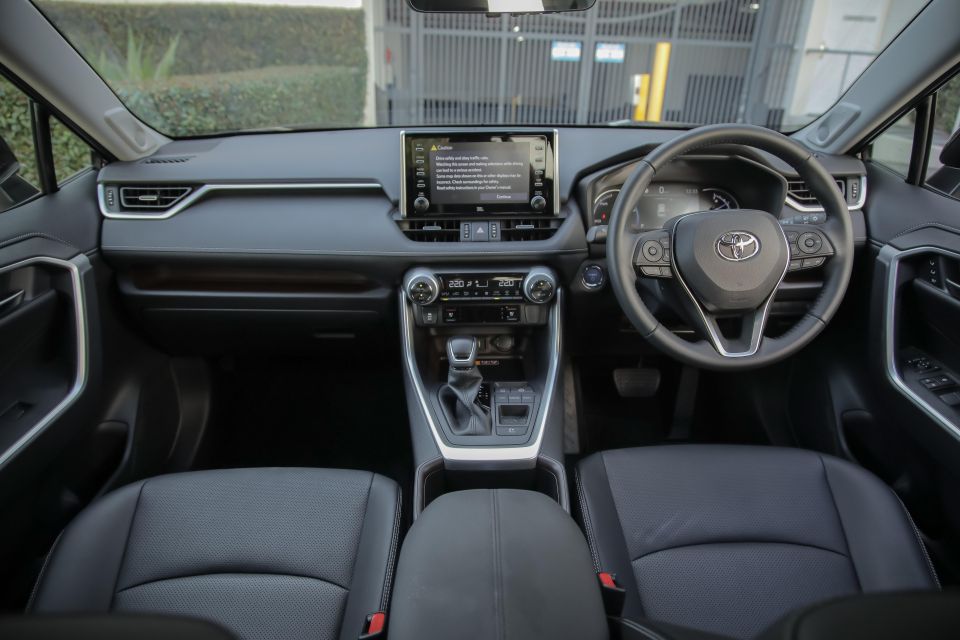
Buy your new car without the stress. It's fast, simple and completely free.

Great service from Travis and team, second time I have used this business would not hesitate to recommend them to anyone
Craig C.
Purchased a Ford Ranger in Sunshine Coast, QLD
CarExpert helped Craig save $7,224 on his Ford Ranger, now let us save you on your next new car.
Get your BEST priceWhile Toyota interiors certainly have a family vibe, its model lines’ cabin designs do mark their respective territories, so to speak. The RAV4, now three years young in its current generation, offers one of Toyota’s finer fit-outs, largely avoiding shortcomings that make some if its stablemates look and feel either old, weird, quirky or patently low-rent.
It’s maintained a contemporary vibe well, minted with a decent sense of quality. It’s interesting in areas that benefit, yet streamlined and straightforward enough for fuss-free use.
The Cruiser gets just enough leatherette in just enough areas to avoid the hard plastic excess evident further down the RAV4 range. Most of the surfaces you tend to often touch are soft and tactile; though, the quality of the leather and leather-like materials are more hardy than sumptuous. You won’t confuse it for a Lexus.
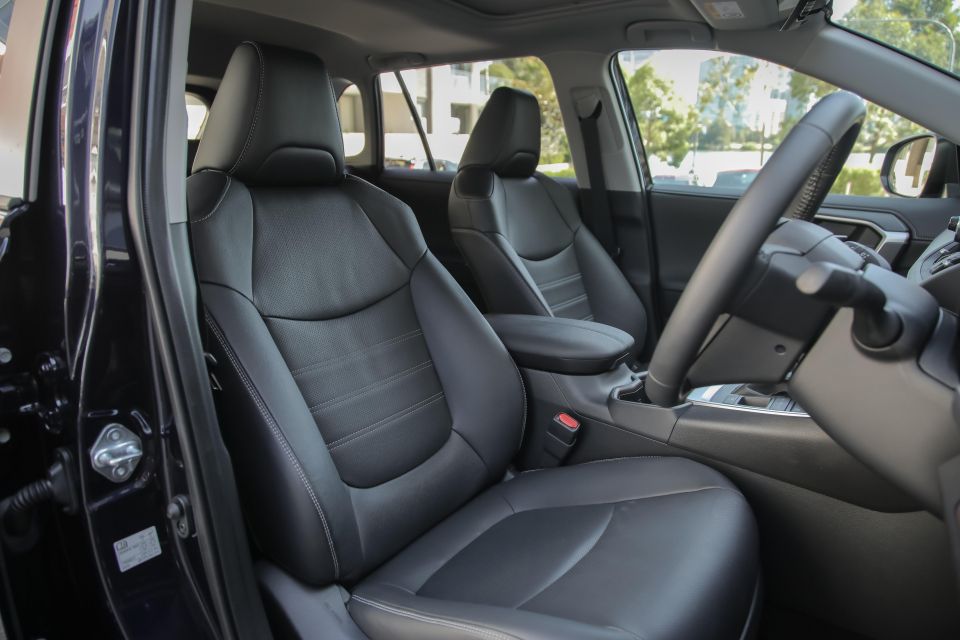
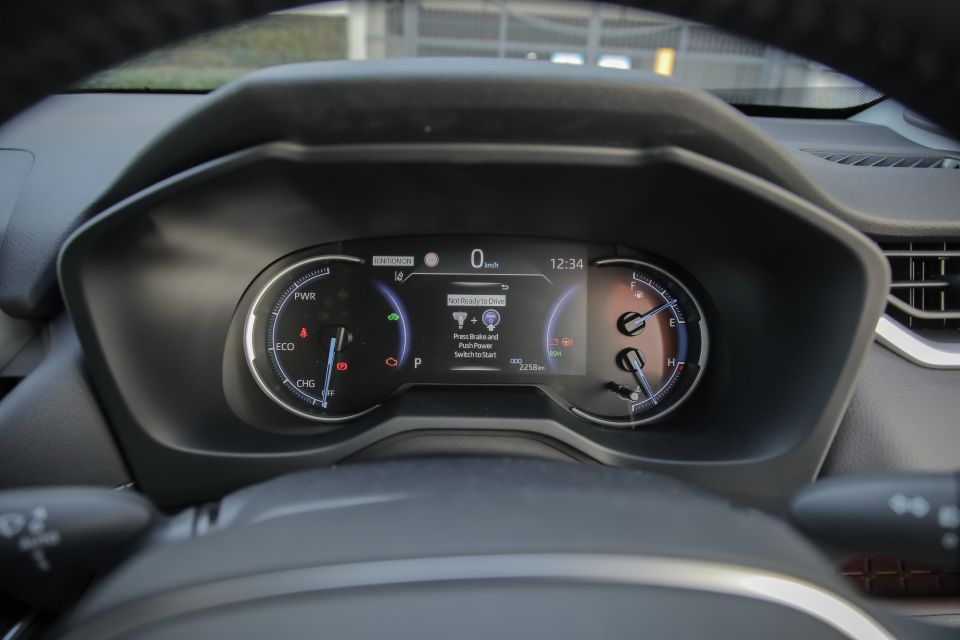
There’s a comfy, lounge-like feel and the quite airy ambience is welcoming. There’s a real sense of solidity, both in heftiness of the structure that cocoons the cabin and also in integrity and feel of the controls and features housed within. The powered front seating offers oodles of tailor-fit adjustment, too.
There are some nice touches, such as the rubber knurled climate control dials and semi-digital instrumentation, which bring some modest sense of occasion. That said, a lot of the cabin is a bit workmanlike in execution, such as the air-con display array and its buttons. At least the compact wheel is pretty neat.
The most dated cabin feature is easily the infotainment. It drags the interior aesthetic into yesteryear. It is due an overhaul later this year and it can’t come soon enough – a multimedia system not unlike that in Toyota’s Korean rivals, for example, would do absolute wonders for RAV4’s cabin freshness, even without any other interior changes.
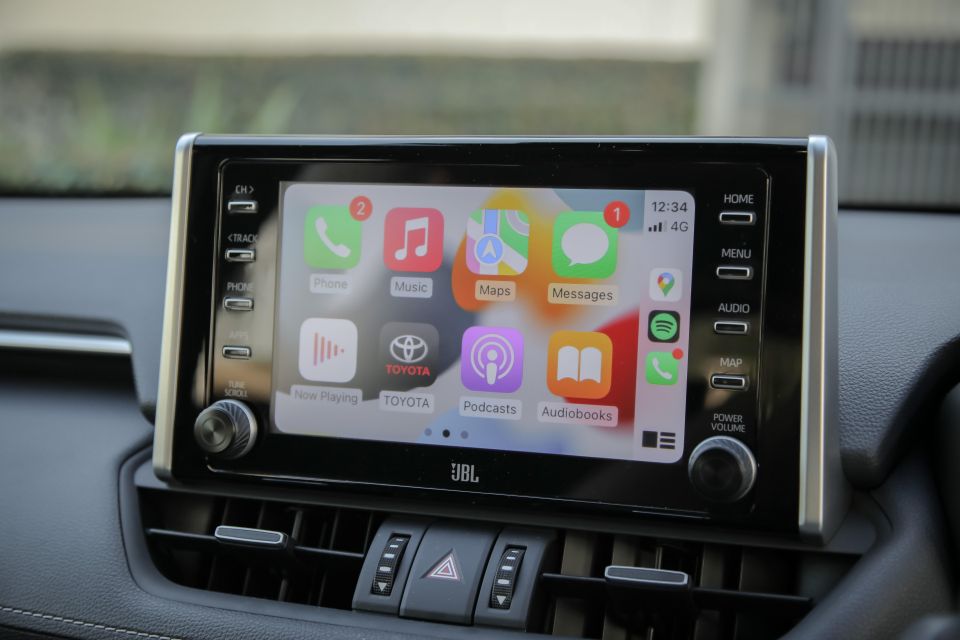

Infotainment is a bit clunky to use, a bit low-res in display clarity and a bit slow in response. Feature wise, the modest 8.0-inch touchscreen system covers bases with DAB+ and a fairly ordinary sat-nav system.
And while the inductive phone charging pad is nice and large, it becomes a little redundant given Apple CarPlay and Android Auto mirroring is wired – and therefore powered – via old-school USB-A ports. As ever, at least the physical shortcut buttons and dials in the display frame are handy.
There’s ample storage up front, including a shelf in the dash fascia and key cubby to the right of the driver; although neither are quite as practical in practice as they might seem in concept. The console and door bins, as well as front cupholders, are fully formed and useful.
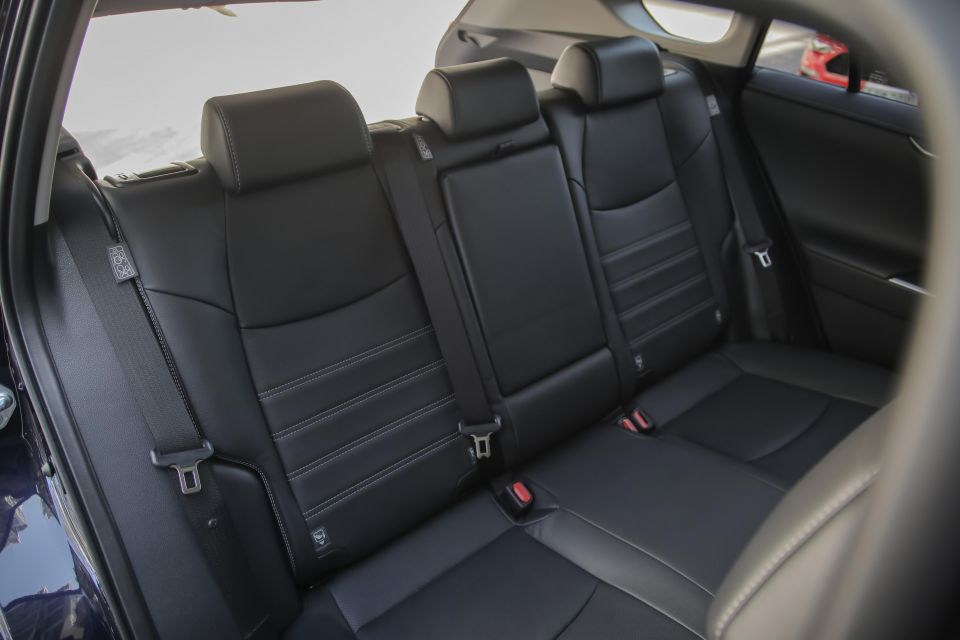

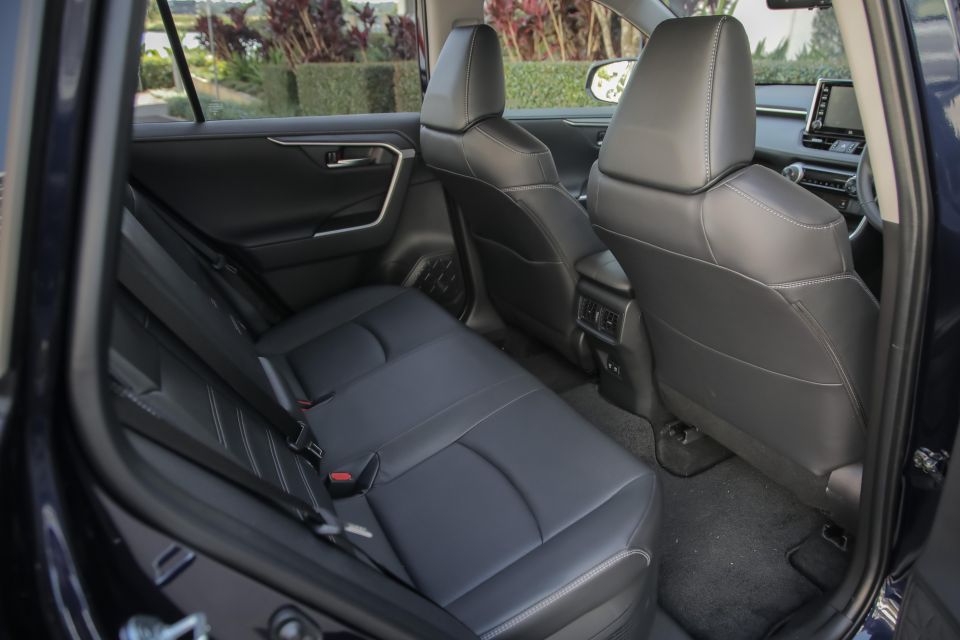
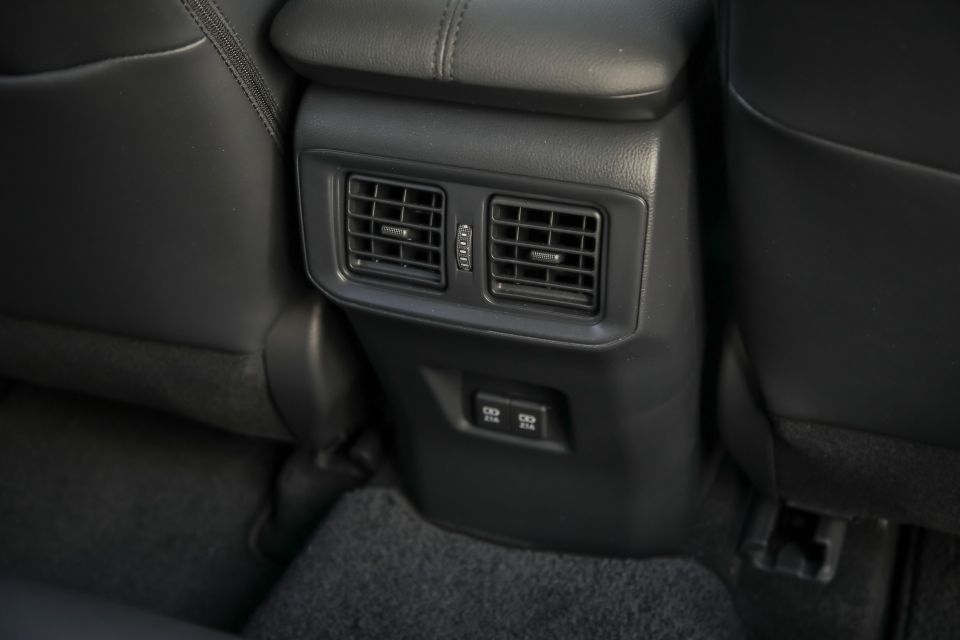
The RAV4’s airy cabin continues through to row two and the Toyota remains one of the more generously accommodating choices in the segment.
Knee, head and shoulder room are all exceptional and there’s enough support from the rear bench for fine long-haul comfort. It’s also roomy enough for easy access to baby capsules, with ISOFIX mounts located in the outboard positions.
Dual USB-A ports, air vents, dual cupholders in the fold-down centre armrest – the RAV4 ticks all of the usual passenger convenience boxes.

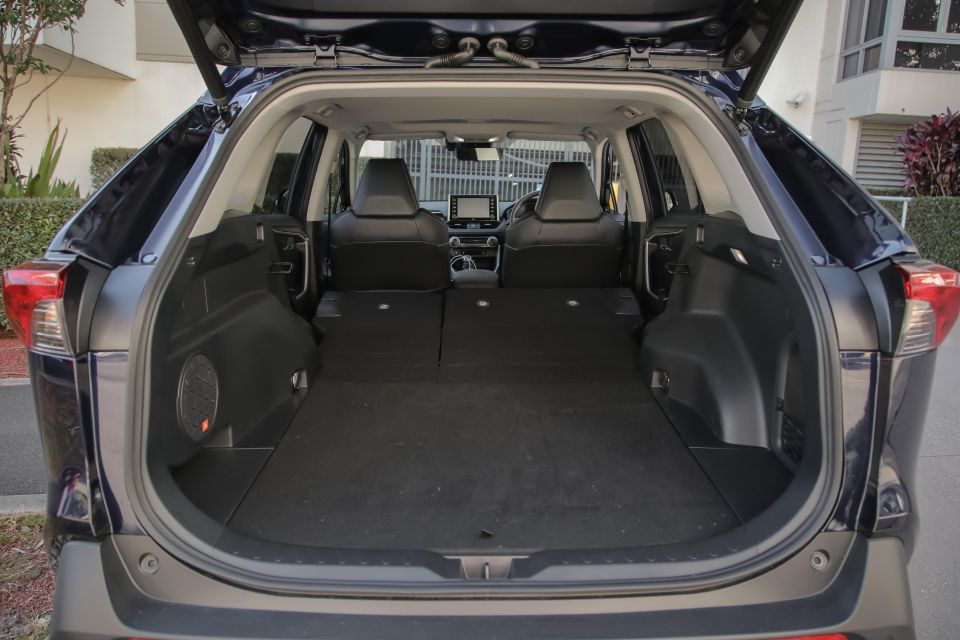
There’s ample versatility for luggage too. The boot is a decent 580 litres advertised and there’s a dual-level floor feature to tune up the available room to taste.
The 60:40-split rear seat backs fold to liberate quite a flat load area and heaps of usable cargo space, though Toyota doesn’t quote maximum available volume for the two-seat conversion.
All in all, the RAV4 interior is certainly fit for purpose and one of the model’s strongest suits.
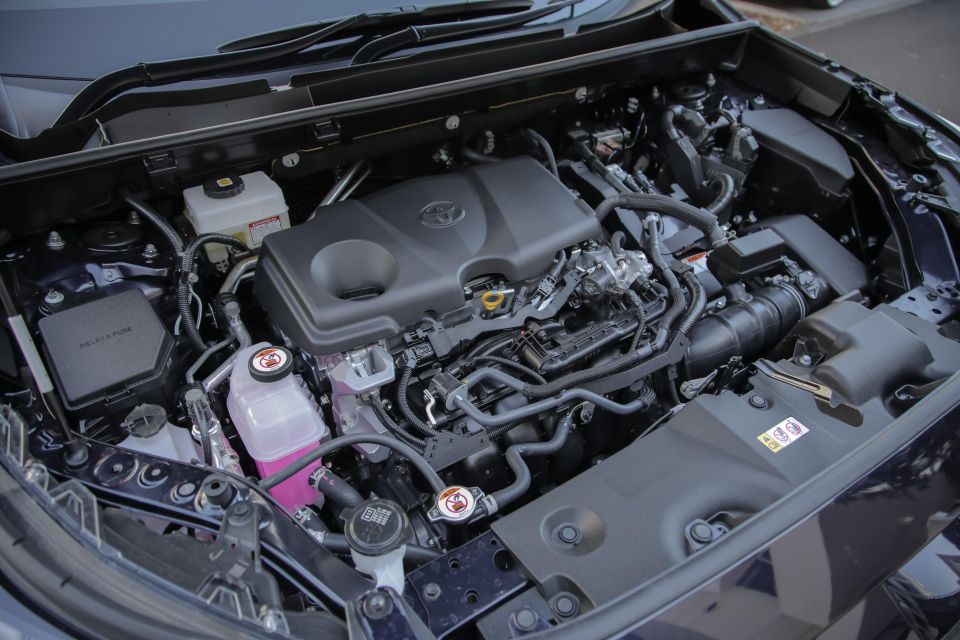
The RAV4’s front-driven hybrid system uses an Atkinson cycle 2.5-litre naturally-aspirated petrol four in tandem with two electric motor-generators that are paired with a nickel-metal-hydride battery pack.
It differs from the AWD version in that the so-called e-Four system adds a third electric motor on the rear axle. In either format, the front wheels are driven via a CVT transmission.
Engine outputs are 131kW and 221Nm while the dual electric motors produce a combined 88kW/202Nm. Toyota quotes total system power as 160kW, three kilowatts shy of the e-Four version (with 40kW and 121Nm at the rear axle) – and as is Toyota tradition there’s no claim for system torque.
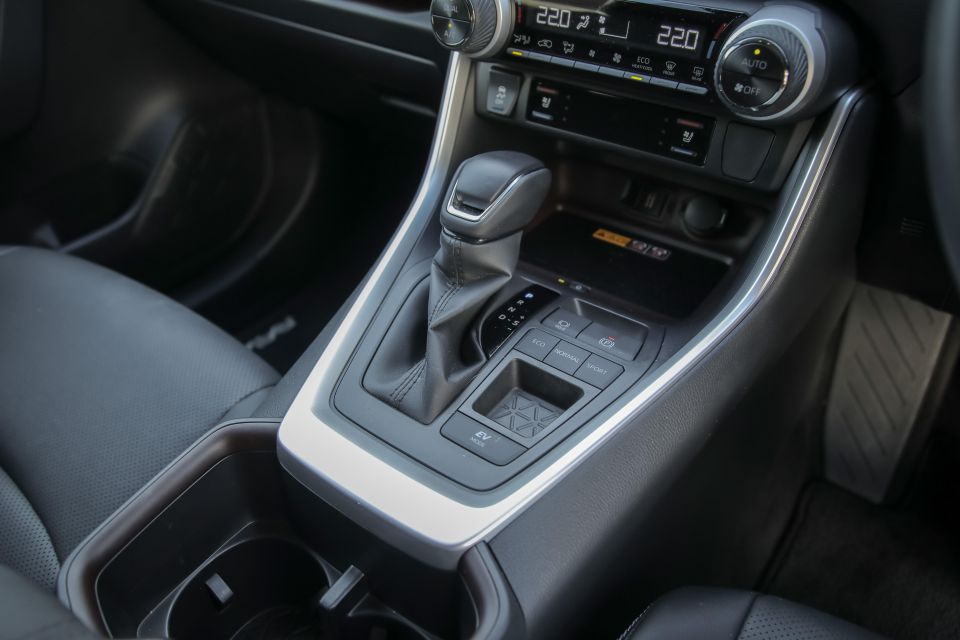
There’s nothing terribly cutting-edge about Toyota’s well-worn ‘closed-circuit’ hybrid formula, but the end benefits are clear. Toyota claims 4.7L/100km fuel consumption and around a 1000km of range on 91 RON and without the requirement to plug it into a power source.
The popularity of the best-seller RAV4 and hybrid take-up amongst buyers – roughly 75 per cent at last count – make you wonder why so few segment rivals opt for a similar powertrain format.
Downside? Towing capacity is just 480kg, braked or unbraked. The RAV4 AWD Hybrid’s braked tow rating, by comparison, is 1500kg.
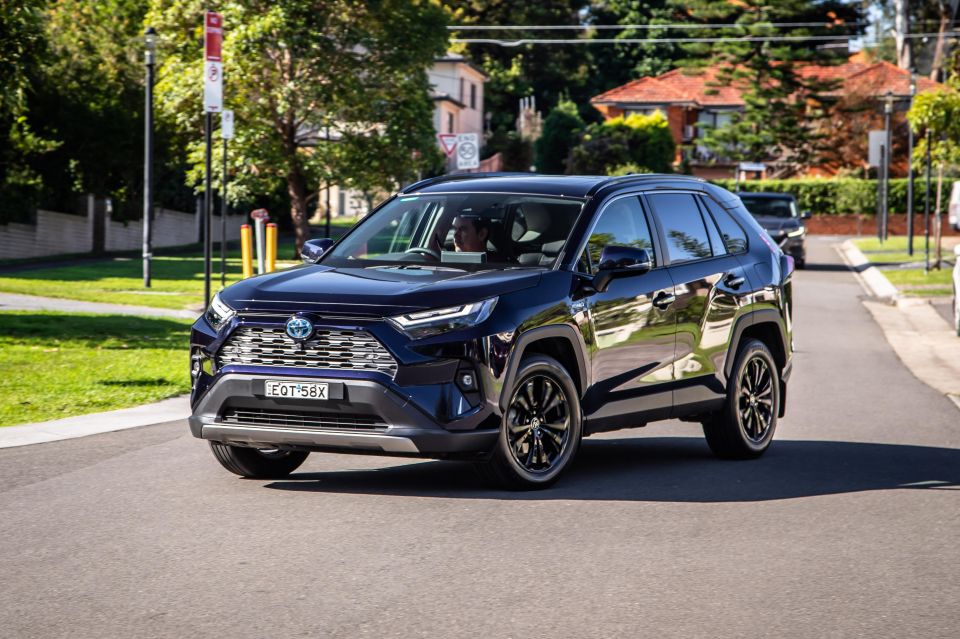
The RAV4 Hybrid is quite an impressive thing on the road. Not because it’s quick, overly characterful or that much of a fun machine – because it’s not.
Instead, its depth and qualities are in areas well-suited for the broad array of targeted buyers. Those buyers even get benefits in areas they mightn’t think to ask for.
It starts and gets moving in EV mode. That’s pleasing in itself. And while the petrol engine nips into life without much right foot provocation and its call to action is conspicuous, the hybrid system is refined enough that you become quickly accustomed to it.
There’s certainly seems to be more polish here than in some older Toyota hybrid systems; although, much of it could be the RAV4’s rather impressive NVH suppression. There is excellent sound isolation from the environment and, presumably, under-bonnet fanfare.
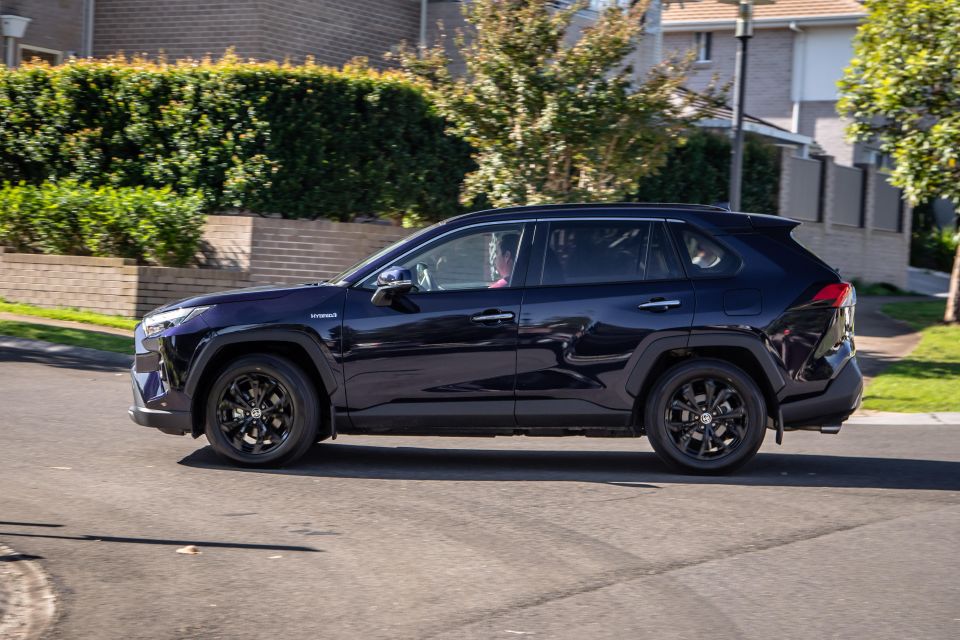
In short, it’s a very quiet operator, especially at a cruise, which brings a pleasing dignity and serenity to forward progress.
We’ve praised all manner of Toyota models built off the marque’s TNGA platform in the past and its inherently engaging nature remains present in the hybrid front-driven RAV4. But it’s more than that.
This offering bucks the contemporary SUV trendiness that favours overly terse suspension tuning and sexy low profile tyres, and it simply makes for a nicer driving experience – for all occupants.
Ride quality is very well judged, particularly over nasty road acne, and there’s enough tyre sidewall to filter out smaller road imperfections. Better yet, there’s a bare minimum of tyre noise at play across most surfaces. The RAV4 really does round-out the on-road experience and manages to do so without robbing the driver of a bit of satisfying involvement.
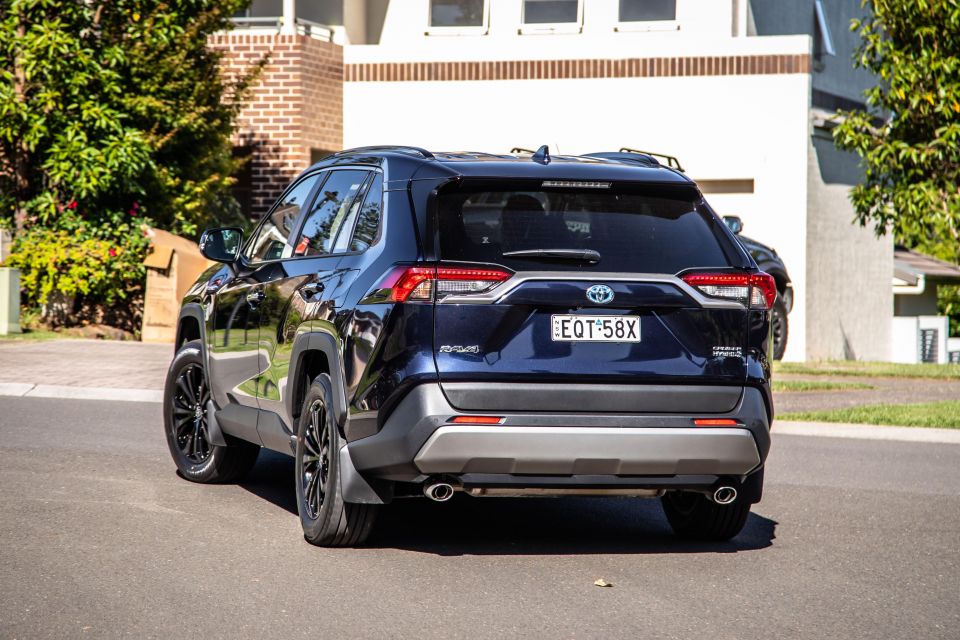
Sure, hybrid drive favours relaxed driving and does get slightly unruffled and a little gruff when called to arms. Actual thrust, though, isn’t bad and the Toyota feels equally at home in the peak-hour crawl as it out on the open road, and while it won’t pay the most handsome electrified benefits during long-distance touring, it’s still comfy and well-suited to such tasks.
Do you feel you are missing something without all-wheel drive? Not at all. At least, not when you’re keeping the rubber on the asphalt.
There’s a Power and EV modes you can select, but neither are all that necessary in normal driving situations and most owners will leave them untouched. The hybrid system does a fine job managing the petrol-electric shuffling without dropping any driveability balls, or the need for much driver intervention at all.
Comfortable and hassle-free motoring is really RAV4 Hybrid’s strongest suit on the road – perhaps as it should be.
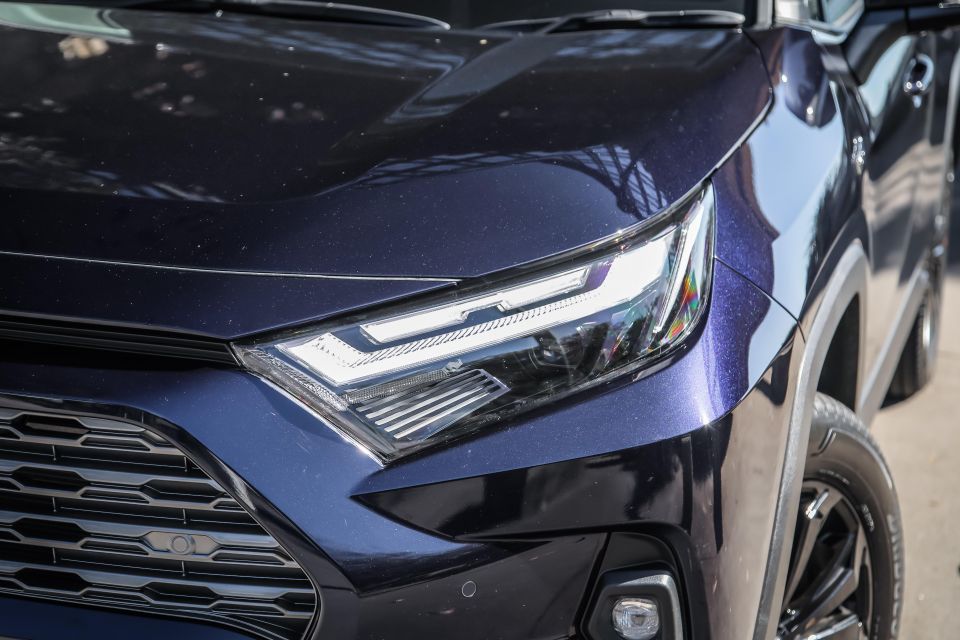

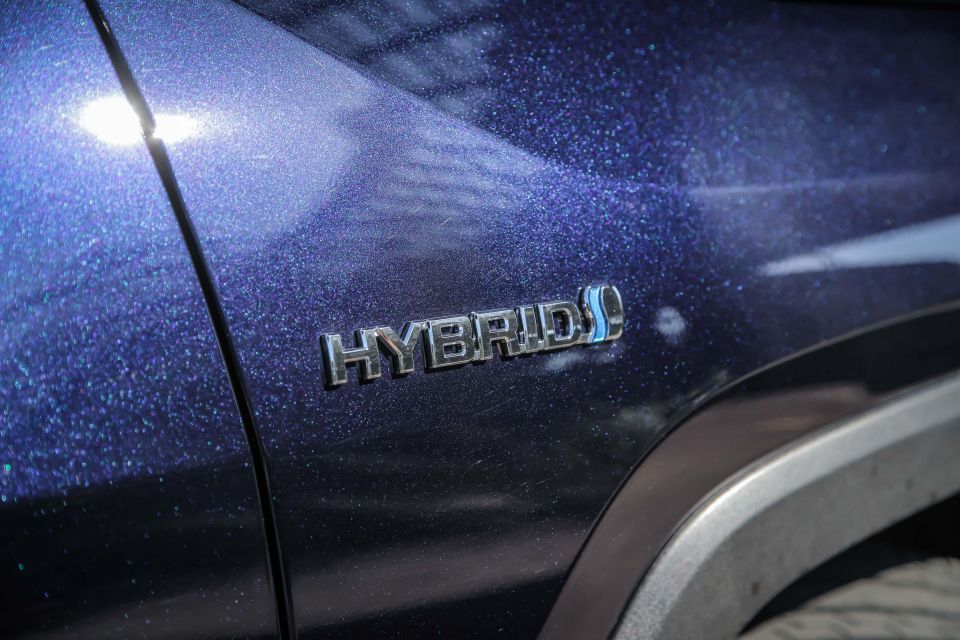

The Cruiser trim gets a smattering of updates for 2022. These include an eight-way power front passenger seat to compliment the carryover 10-way driver’s pew, as well as three-stage front seat ventilation, illuminated window switches, and a digital rear-view mirror.
Hybrid versions of the Cruiser get new-look black 18-inch wheels as well as the aforementioned revised LED headlights and upgraded LED fog lights.
Elsewhere, the Cruiser Hybrid trim highlights include:
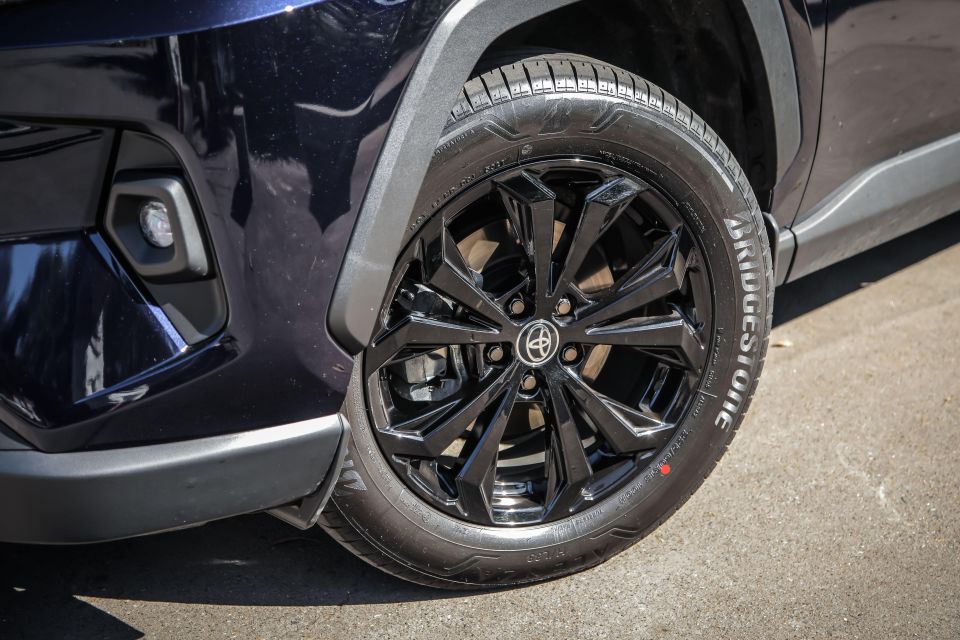

Where expert car reviews meet expert car buying – CarExpert gives you trusted advice, personalised service and real savings on your next new car.
Features shared with lower-grade variants include:

The Toyota RAV4 wears a five-star ANCAP safety rating based on tests conducted in 2019.
It scored of 93 per cent for adult occupant protection, 89 per cent for child occupant protection, 85 per cent for vulnerable road user protection, and 83 per cent for safety assist.
Standard safety features across the range include:

The RAV4 range is covered by Toyota’s five-year, unlimited-kilometre new vehicle warranty. The hybrid system’s battery is guaranteed for up to 10 years conditionally if regular servicing is maintained.
Service intervals are every 12 months and 15,000km, whichever comes first. Each visit is capped at $230 for the first five years, which is amongst the thriftiest in its segment.
Real-world consumption is typically around the six-litre mark compared to its 4.7L claim, though this is largely dependent on driving conditions as this type of hybrid system is designed to bring most economic benefit around town.
That it runs on crappy 91 RON unleaded is a real boon for the hip pocket too.
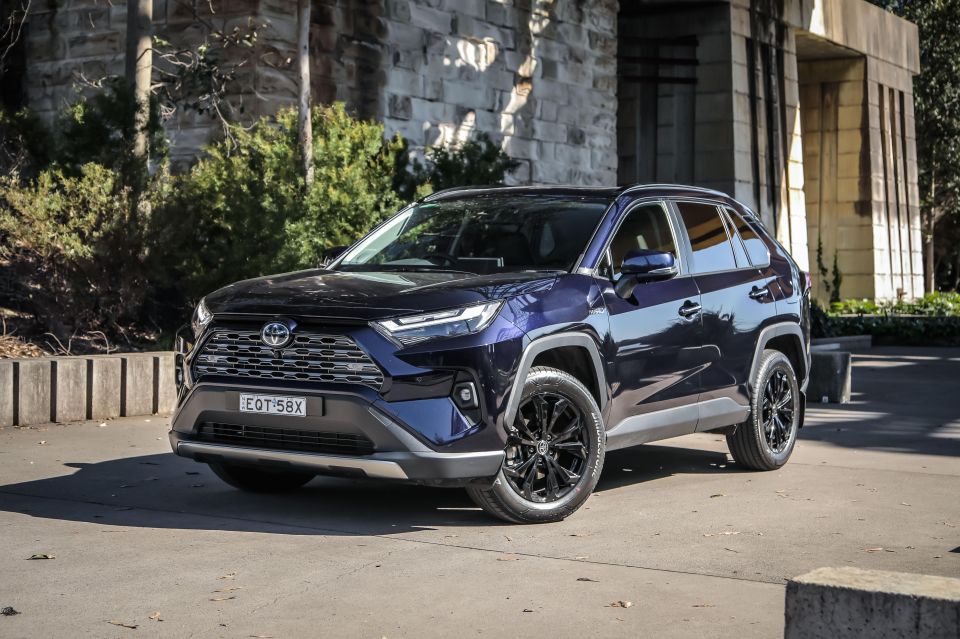
Buy your new car without the stress. It's fast, simple and completely free.

Great service from Travis and team, second time I have used this business would not hesitate to recommend them to anyone
Craig C.
Purchased a Ford Ranger in Sunshine Coast, QLD
CarExpert helped Craig save $7,224 on his Ford Ranger, now let us save you on your next new car.
Get your BEST priceA few years back I lucked into attending the international launch, in the US, of this fifth-generation RAV4.
I was struck by its truck-derived styling and how much of a leap forward it was over the fourth-gen still on sale in Oz at the time.
“It’ll sell like hotcakes,” I told anyone who’d listen. Boy, has it ever.
I’ve driven quite a few examples in the past three years, each time growing in my application of just how many things it does well, almost in justification of its sheer popularity.
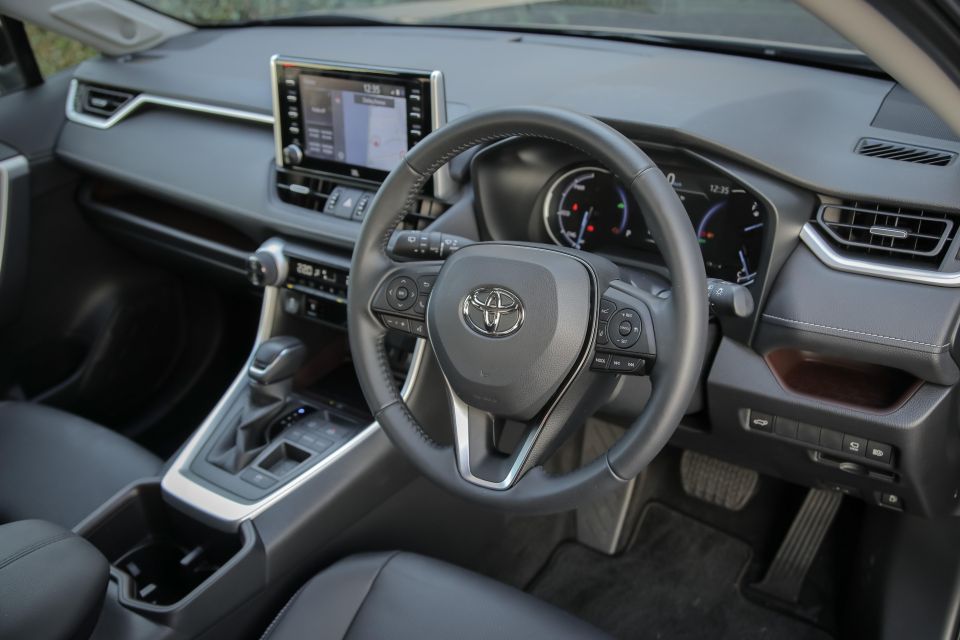
Now, in the RAV4 Cruiser 2WD Hybrid, I reckon I’ve experienced the proper pick of the litter. As a blend of trim and powertrain against asking price, it’s impressive.
Packaging, comfort, refinement, on-road manners, thrifty ownership… its list of pluses is lengthy and broad-reaching.
You maintain most of this goodness by keeping the hybrid 2WD powertrain and dropping down a trim level or two for maximum value. That is, in some parallel universe where Toyota can more easily accommodate the current local demand.
Should you wait for RAV4’s much needed infotainment update (hopefully) later this year? Perhaps. If you’re patient enough and don’t mind a gamble on delivery timeframe.
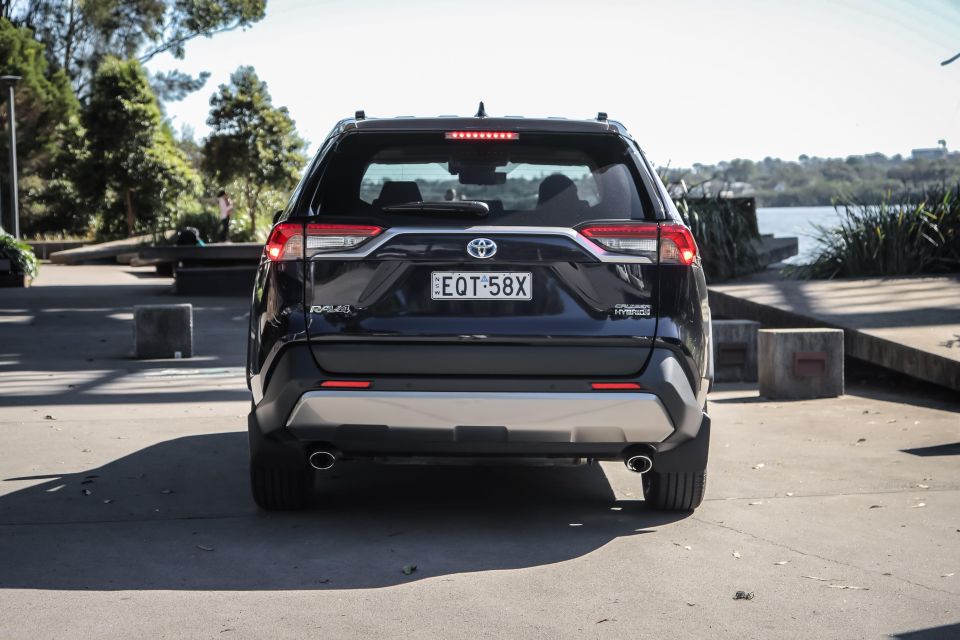
Click the images for the full gallery
MORE: Everything Toyota RAV4
Where expert car reviews meet expert car buying – CarExpert gives you trusted advice, personalised service and real savings on your next new car.


Andrew Maclean
15 Days Ago


James Wong
12 Days Ago


Max Davies
10 Days Ago


Paul Maric
8 Days Ago


Max Davies
6 Days Ago


James Wong
4 Days Ago